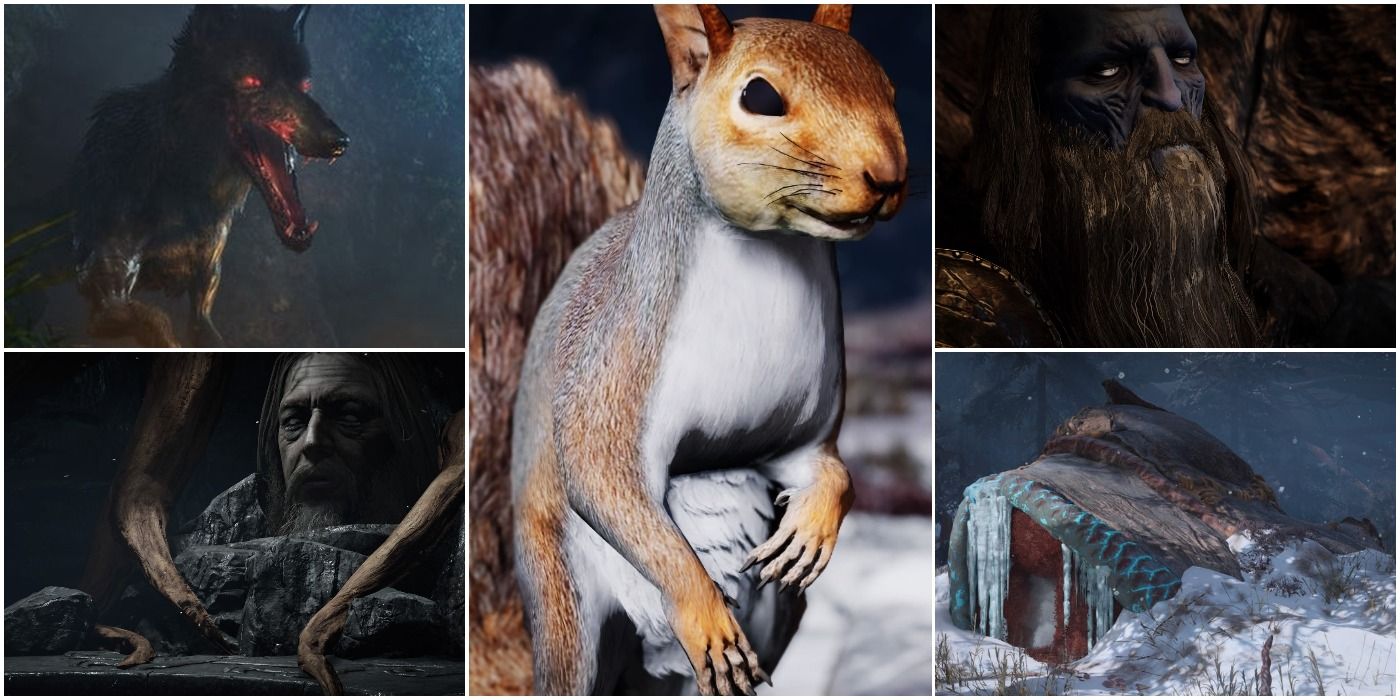
Assassin's Creed Valhalla showed an impressive amount of research when it came to depicting Viking history, but it also touched on Norse Mythology. Although not the first Assassin's Creed game to incorporate pieces of mythology into its narrative (Origins and Odyssey had sections drawing on Egyptian and Greek mythology), Valhalla explores Norse mythology on a much deeper level than its predecessors.
RELATED: 10 Pro Tips For Assassin’s Creed Valhalla You Need To Know
Origins had one dream sequence that drew on Egyptian mythology, while Odyssey included hidden encounters with mythological creatures based on Greek mythology. Valhalla has a series of dream sequences with Eivor cast in the role of Odin (referred to by one of his other names, "Havi") that form an overarching narrative about Odin's quest to escape his fate at Ragnorak, the end of the world.
The story of Odin's journey actually combines several different Norse myths, and also finds room to slip in references to others. Here are five crazy stories depicted or referenced in Assassin's Creed: Valhalla's depictions of Asgard and Jotunheim.
5 Mimir And the Well Of Knowledge
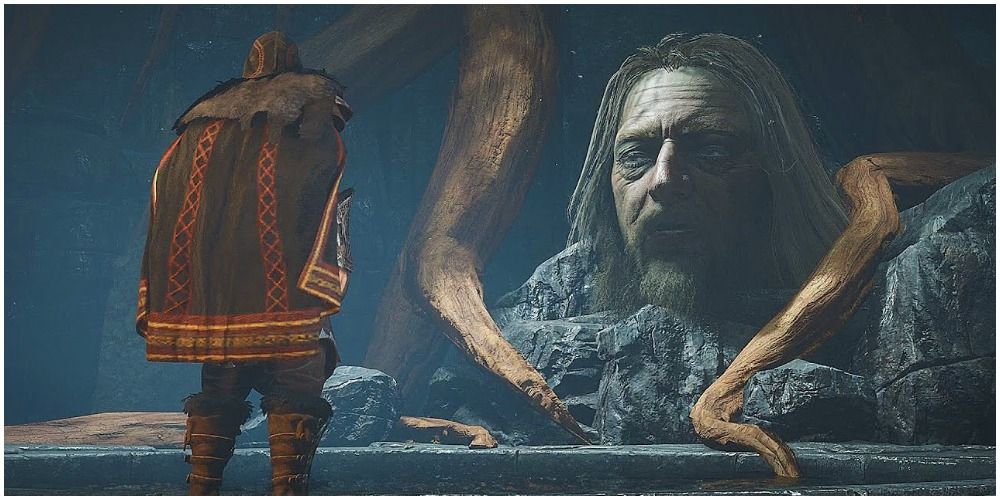
One of the more surreal moments in Havi's journey comes when they encounter a well containing valuable knowledge which is overseen by a disembodied head. This section of the game comes directly from mythology. The exact details vary between different versions, but the story usually describes Odin finding the well in his relentless pursuit of knowledge, and he is told that he can gain wisdom from drinking its water, but only if he makes a huge sacrifice. In both the game and the original myth, Odin sacrifices an eye, which allows him access to the well.
RELATED: Assassin's Creed Valhalla - Comparing the Asgardians to their MCU Counterparts
The head belongs to Mimir, who may or may not be Odin's uncle (depending on the version). Mimir was beheaded in the aftermath of a long and brutal war among the Norse gods. Not wanting to lose Mimir's knowledge, Odin used magic to keep the head alive. Sometimes he literally brought out the severed head to consult on matters that required advice, a detail not included in the game. Mimir's most prominent role in Norse mythology is acting as the keeper of the well, and declaring that Odin may only drink from it if he makes a big sacrifice.
4 Ratatosk The Squirrel
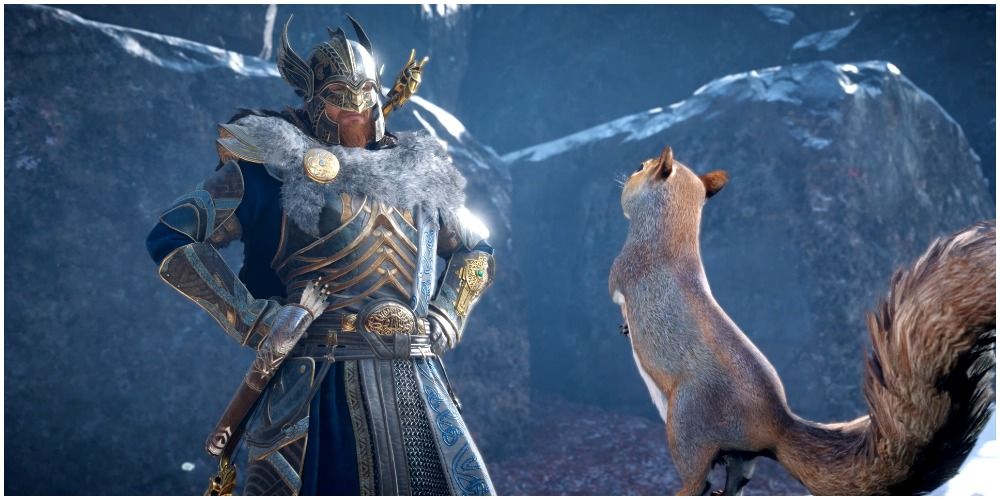
Surprisingly, one of the toughest figures of Norse Mythology is also one of the smallest and lesser-known figures- Ratatosk the Squirrel. According to myth, Ratatosk is a messenger whose job is to run up and down the Tree of Yggdrasil, which encompassed the entire universe. This literally means he had to run from one end of the universe to the other on a regular basis, mainly delivering messages between two figures. At the top, he would be talking to an eagle. At the bottom was Nidhogg, a monstrous serpent or dragon (depending on the version) who brought chaos into the world by chewing on Yggdrasil's roots. Ratatosk had to face both, and deliver messages between them. That takes a lot of nerve.
Ratatosk is not a huge part of the story, only appearing in one spot in Jotunheim. However, the player can engage in a flyting contest with him, which is valuable for increasing charisma.
3 Skrymir's Mitten
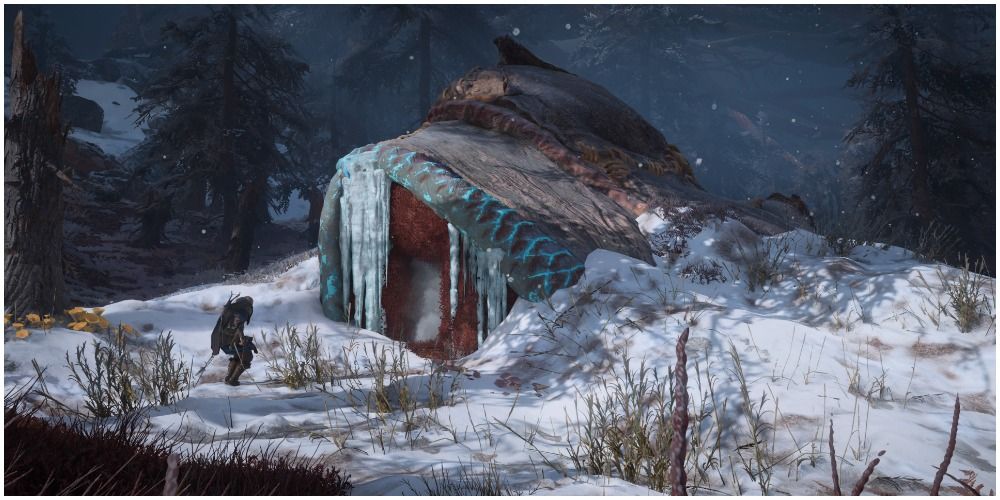
Skrymir himself does not actually appear, but one of his dropped mittens becomes an important location in Assassin's Creed: Valhalla. The glove alone is so large it looks more like a cave than a piece of cold-weather apparel. One can only imagine the size of its owner.
The original myth was actually about Thor and Loki, not Odin as shown in the game. Skrymir is a giant encountered while traveling through Jotunheim. The exact details of the encounter vary between accounts, but a common version involves Thor and Loki taking refuge in a cave that turns out to be Skryimir's glove. Skrymir offers to carry their bags but keeps them up at night with his snoring to the point where Thor tries (and repeatedly fails) to kill him with his hammer.
Later on, Skrymir turns out to be Utgard Loki (not related to Loki), a king who has been trolling Thor and Loki by tricking them into doing impossible tasks. Utgard admits to being impressed by their efforts but decides Thor and Loki are too dangerous and has them permanently banned from Jotunheim.
2 Fenrir
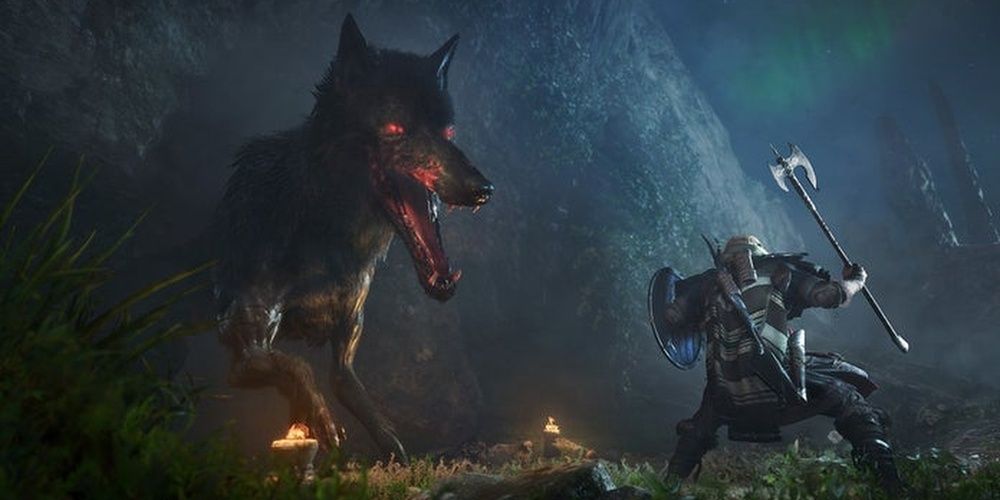
Assassin's Creed Valhalla's depiction of the infamous wolf prophesized to be Odin's downfall is actually pretty close to the original myth. Fenrir was indeed Loki's son, whom Odin tried to bind in an effort to avert disaster. When Fenrir kept growing and easily breaking out of any chains placed on him, Odin turned to the dwarves for help and was given a list of odd ingredients needed to make the unbreakable chain. Assassin's Creed: Valhalla simplified this part, with the player only needing to obtain two of them- a "cat's footfall" and the "root of a mountain." (ingredients not mentioned in the game include "fish's breath" and "women's beards").
RELATED: Assassin's Creed Valhalla: 10 Facts About Vikings It Gets Right
The climactic confrontation between Odin and Fenrir was straight out of the mythology, right down to Tyr placing his hand in the wolf's mouth, and losing it when the chains are placed. However, unlike the game, the chains were actually able to hold down Fenrir for a time, until he finally escaped during Ragnorak. The original myths also depict Fenrir as being inherently evil, while Assassin's Creed: Valhalla makes him slightly more sympathetic with the implication that Odin's cruelty made him vicious.
1 Suttungr And The Special Mead
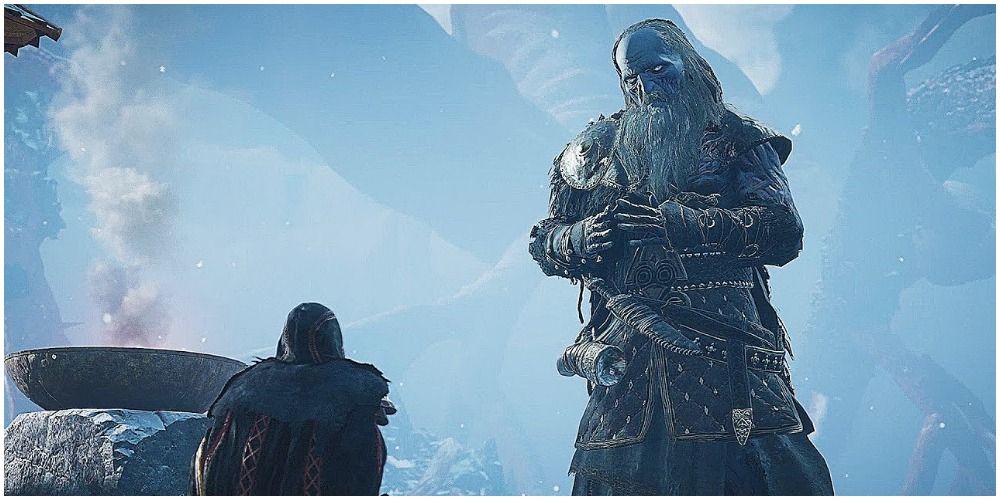
Part of Havi's quest involves the journey into Jotunheim in search of a special mead that will grant him knowledge, which he must obtain from a giant named Suttungr. The drink featured in the quest is known as the Mead of Poetry, and itself has a weird background. It involves an extremely wise man named Kvasir who is created from spit and traveled the world spreading wisdom until he was murdered by a pair of dwarves, who then mixed his blood with honey to create the mead. Sometime later, the two dwarves murder a pair of giants who happen to be Suttungr's parents.
When Suttungr comes for revenge, the dwarves plead for mercy and offer the mead in exchange for their lives. Suttungr agrees to their terms and takes the mead, which is then guarded by his daughter Gunnlöð. This is the part where Odin comes in, and which is depicted in the game. The player can seduce Gunnlöð, which happened in the original myth, but it leaves out the part where offers three nights with her in exchange for three sips of mead that he manages to turn into three whole gulps.
NEXT: Comparing Assassin's Creed Altair & Maria to AC Origins Bayek & Aya

